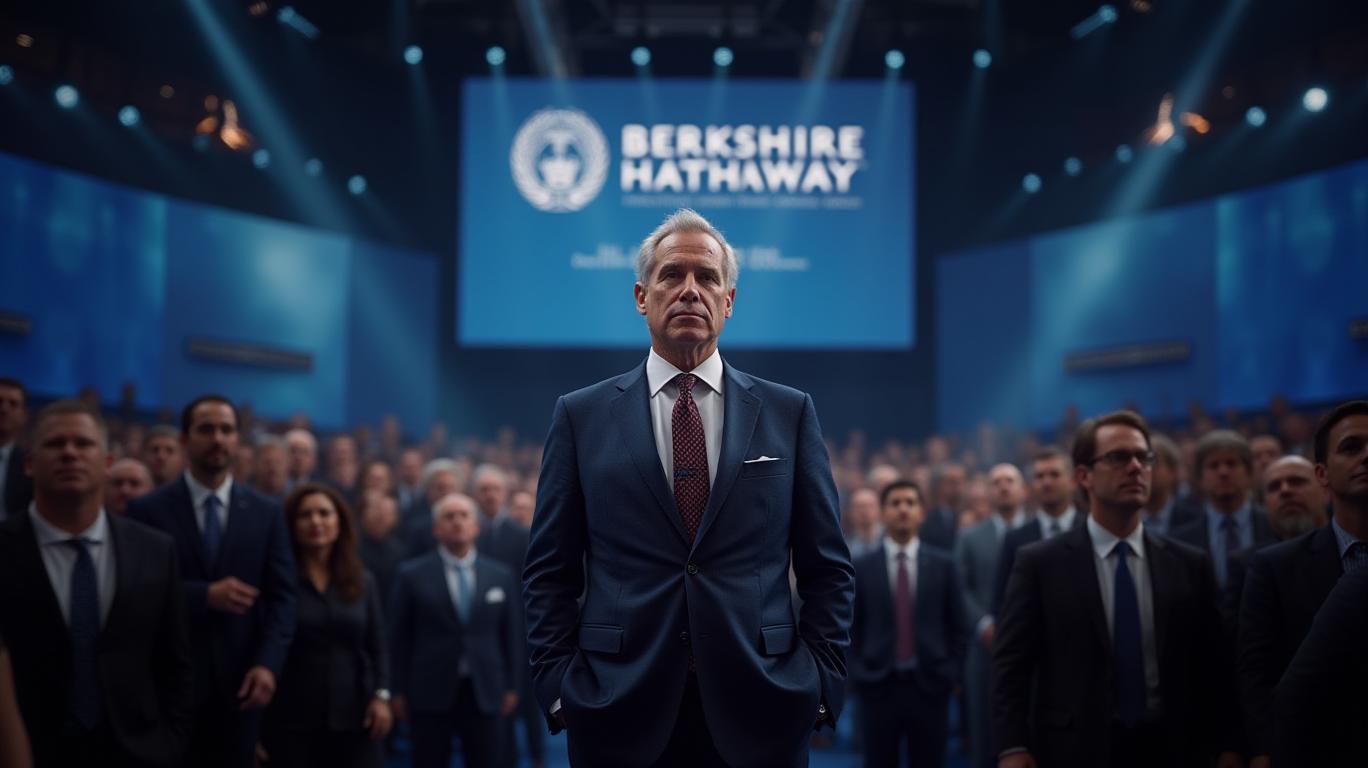Berkshire Hathaway's 2025 Shareholders Meeting: Navigating Transition and Value in Uncertain Waters
The annual
shareholders meeting, often dubbed the “Woodstock of Capitalism,” is a barometer of investor sentiment and corporate strategy. As the 2025 event approaches, shareholders and analysts will scrutinize Warren Buffett’s legacy, Greg Abel’s ascension, and the company’s ability to deploy its $334 billion cash hoard amid a shifting economic landscape. This year’s meeting, set against mixed Q1 results and a backdrop of leadership transition, promises to be a pivotal moment for the conglomerate.Leadership Transition: The Buffett Succession Crucible
The spotlight on May 3 will inevitably fall on the succession plan. Greg Abel, now firmly established as Buffett’s heir apparent, and Ajit Jain, who continues to oversee the insurance division, will face questions about operational continuity. The Q1 report highlights Berkshire’s decentralized model—Abel managing non-insurance businesses, Jain the insurance arm—as a strength, but execution remains unproven.
Investors will seek clarity on whether Abel can replicate Buffett’s knack for capital allocation. Analysts note that while Abel’s presence at the meeting signals confidence, the market’s acceptance of his leadership will hinge on tangible evidence of strategic decisions post-2025.
Capital Allocation: A $334 Billion Question
Berkshire’s record cash reserves—up 11% year-over-year to $334.2 billion—highlight both opportunity and pressure. The Q1 earnings report underscores a conundrum: while operating income surged 27% to $47.44 billion, revenue fell 9% year-over-year. This divergence suggests that Berkshire’s core businesses (rail, energy, insurance) are thriving, but its investment portfolio faces headwinds.
Recent moves, such as investments in Japanese trading firms and Sirius XM, hint at a strategy to diversify beyond traditional sectors. Yet, with the cash pile growing, shareholders will demand answers: Will Berkshire return to mega-deals? Or will it double down on share repurchases?

Core Businesses: Stability Amid Volatility
Berkshire’s operational resilience is its backbone. Q1’s standout was GEICO, where underwriting profits more than doubled year-over-year, a stark rebound from prior catastrophe-driven losses. Meanwhile, BNSF Railway and Berkshire Hathaway Energy continue to dominate logistics and renewables, respectively.
The consumer brands—Dairy Queen, Duracell—are also a quiet success. Their stable performance, buoyed by inflation-resistant pricing, underscores Buffett’s long-standing preference for businesses with “moats.” However, the question remains: Can these legacy businesses sustain growth in a digitizing economy?
Risks and Challenges: The Clouds on the Horizon
Despite operational strengths, risks loom large. Succession uncertainty could test Berkshire’s identity; investors may grow wary if Abel’s strategy diverges sharply from Buffett’s. Additionally, the equity market exposure—particularly holdings in Apple and Bank of America—leaves Berkshire vulnerable to broader market swings.
The cash deployment pressure is perhaps the greatest test. With $334 billion in reserves, underperformance in capital allocation could erode valuation multiples. Analysts have tempered stock targets, with some setting a $525 price for Class A shares—below the stock’s March 2025 price—unless Berkshire signals bold moves.
Conclusion: A Test of Legacy and Vision
The 2025 shareholders meeting will crystallize whether Berkshire can transition from Buffett’s era into Abel’s without losing its competitive edge. The data is clear: operating income growth and core business stability provide a solid foundation. Yet, the $334 billion cash pile demands purposeful action.
If Abel and Jain can articulate a coherent vision—one that balances traditional strengths with new opportunities—Berkshire’s stock could surge toward the $860,000 Class A target cited in recent analyses. Conversely, indecision or missteps could expose vulnerabilities in a company long synonymous with prudence.
As shareholders gather in Omaha, the message is clear: Berkshire’s future hinges on executing its dual mandate—to protect its legacy while adapting to a world where value lies not just in what you own, but in what you build next.
The stakes have never been higher.

Comments
No comments yet